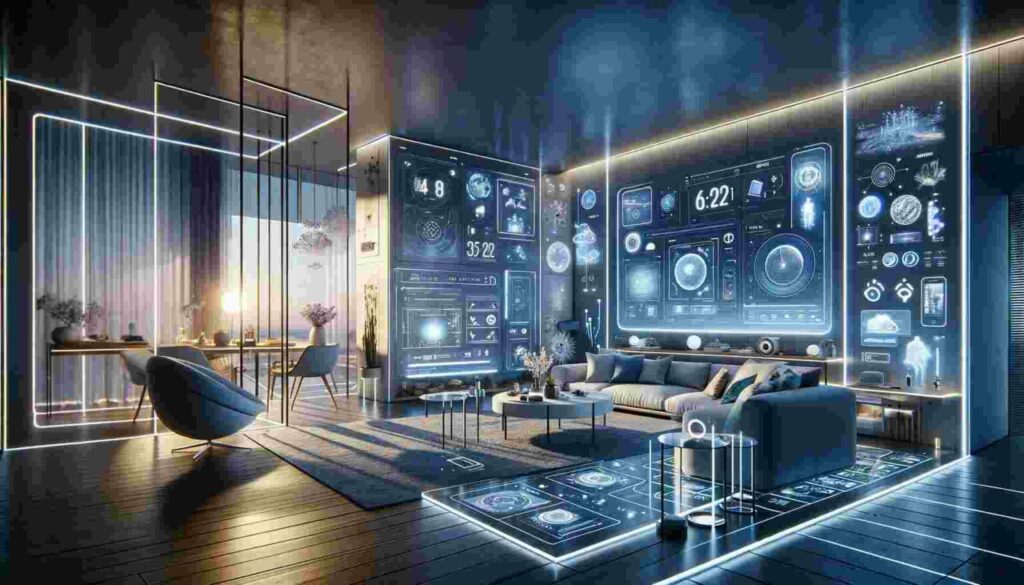Explore the future of Next-Gen Ambient Tech with 6 cutting-edge innovations. Discover how AI-powered environments and sensor-based automation are reshaping smart living.
Next-Gen Ambient Tech: 6 Intelligent Innovations Transforming Everyday Life
Next-Gen Ambient Tech is shaping the way humans interact with technology in daily life. This emerging field blends artificial intelligence, real-time sensors, and automation to create smart environments that adapt seamlessly to human needs. Unlike traditional smart tech that responds to direct commands, ambient technology is designed to work in the background—quietly intuitive, efficient, and proactive.
From your home to your workplace, ambient systems are transforming how we live, communicate, and stay productive. This article explores six intelligent innovations fueling this shift. These include context-aware smart systems, sensor-based automation, and AI-powered environments, all aimed at creating more personalized, human-centric living experiences.
1. Context-Aware Smart Systems
One of the most critical components of next-gen ambient tech is context-aware smart systems. These systems collect data from their surroundings—like motion, sound, temperature, and user activity—and respond automatically based on that context.
Walk into a room, and lights turn on to your preferred brightness.
Your thermostat adjusts based on your past preferences and current weather.
Music or news plays in sync with your morning routine.
This isn’t magic—it’s a blend of machine learning, sensor-based automation, and user behavioral data. Offices and smart buildings are using context-aware technology to improve energy efficiency and comfort. These systems reduce energy consumption by adjusting lighting and HVAC systems based on occupancy, making them eco-friendly and cost-effective.
2. AI-Powered Environments
AI-powered environments go a step further than smart systems by learning from your behavior and proactively supporting your needs. Instead of waiting for a command, these environments anticipate actions.
In a healthcare setting, AI-driven ambient tech adjusts room temperature, lighting, and sound to help reduce patient anxiety and promote healing. In homes, it can detect stress levels through biometric devices and respond by adjusting lights or playing soothing sounds.
These environments use deep learning and AI automation to personalize experiences at an emotional and cognitive level. The goal is to make environments feel more alive, more aware, and more in tune with your life.
3. Sensor-Based Automation
Sensor-based automation is the backbone of ambient intelligence. It allows smart devices to receive environmental inputs and take action instantly.
Common examples include:
Motion sensors that activate hallway lighting at night.
Humidity detectors in bathrooms that control exhaust fans.
Voice sensors that distinguish between family members and tailor responses.
Whether used in pediatric care, elderly assistance, or smart kitchens, sensor-based automation helps reduce the need for manual control and offers a seamless lifestyle. This type of automation ensures that daily tasks—from safety to convenience—are handled effortlessly in the background.
4. Intelligent Ambient Computing
Intelligent ambient computing is the invisible network behind every smart experience. It connects all your smart devices into one synchronized system.
For example:
Your alarm goes off.
Lights slowly brighten.
Curtains open.
Coffee starts brewing.
Your fitness app reminds you of your morning run.
All of this happens without you needing to touch a screen or button. AI in healthcare, smart homes, and workplace automation rely heavily on this seamless orchestration. Intelligent ambient computing is where natural language processing (NLP) meets predictive AI—delivering an intuitive, human-like tech interaction that feels organic, not robotic.
5. Real-Time Environmental AI
Real-time environmental AI is crucial in large public venues. This tech gathers live data from the environment—like air quality, noise levels, and crowd movement—and reacts instantly to ensure comfort and safety.
Use cases include:
Adjusting ventilation in crowded malls.
Redirecting pedestrian flow in emergencies.
Modifying lighting in auditoriums based on occupancy.
This kind of tech is vital for smart cities, where every second counts in managing energy, resources, and human behavior. It’s not just about automation—it’s about immediate, adaptive response.
6. Human-Centric Technology
The true value of next-gen ambient tech lies in its human-centric design. This innovation ensures that technology adapts to humans—not the other way around. It focuses on emotional well-being, accessibility, and inclusivity.
Examples include:
Lighting systems that reduce eye strain.
AI assistants that adjust tone for different age groups.
Reminders that encourage better posture or mental breaks.
Human-centric ambient tech fosters trust. When tech responds empathetically, users feel safer and more understood. It’s the difference between a home that reacts and one that cares.
Conclusion
Next-Gen Ambient Tech is not just a futuristic buzzword—it’s a present reality transforming how we live, work, and connect. With innovations like context-aware smart systems, AI-powered environments, and real-time environmental AI, our environments are becoming more intelligent, efficient, and empathetic.
Whether it’s through machine learning, sensor-based automation, or natural language processing, these technologies blend into the background—improving quality of life without needing constant user input.
As we look ahead, the focus will be on human-centric design, personalization, and making technology more invisible yet more impactful. Welcome to the future of smart living—powered by Next-Gen Ambient Tech.




